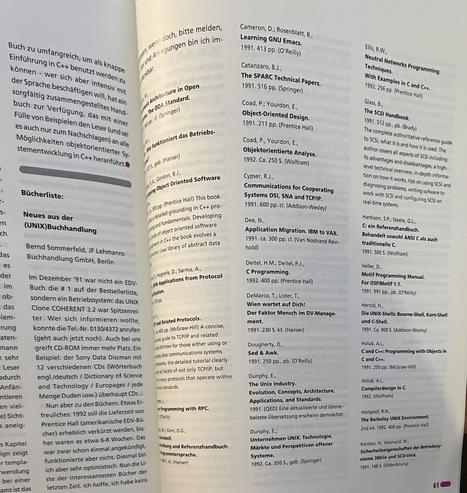In the early 70s, Ken Thompson wrote the original Unix shell by hand, giving users a simple but powerful interface to control the system. It allowed commands to be chained, redirected, and scripted, laying the foundation for nearly every terminal-based environment that followed. Even now, shells like sh, bash, and zsh all trace their lineage back to Thompson’s early work.
#UNIXHistory
👴🌞 Ah, the good old days when Sun Microsystems was a "tiny startup" and not just a nostalgic anecdote for boomers to reminisce about at dinner parties. Apparently, porting UNIX to mainframes was the pinnacle of excitement—40 years later, and it's still being dragged out like it was Woodstock. 🎸📜
https://akapugs.blog/2022/05/03/674/ #SunMicrosystems #Nostalgia #UNIXHistory #TechMemories #StartupCulture #HackerNews #ngated
Decided to display the VAX-11/750 at the @revspace open day yesterday. All the hard work repairing it seems to have paid off, managed to get 14 hours of uptime out of it before shutting it down at the end of the day! #unix #retrocomputing #dec #vax11 #minicomputer #unixhistory #bsd
Before Wayland, there was X11, the graphical backbone of Linux for over 35 years. Originally developed at MIT in the 1980s, X11 introduced network transparency, allowing applications to run on one machine while displaying on another, a concept ahead of its time. This flexibility made it an essential part of UNIX and later, Linux desktops, powering everything from early X Window Managers to full desktop environments like Xfce, MATE, and KDE.
Despite its age and complexity, X11 remains widely used today, proving that well engineered software can stand the test of time. While Wayland aims to replace it with a modern, secure approach, X11’s legacy continues to shape how we interact with Linux desktops.
@bso2000 Schau mal, was ich gestern Abend in meinem Alteisenarchiv gefunden habe 🙂 Das ist aus der allerersten Ausgabe ›Offene Systeme‹ vom März 1992. Deine Bücherliste geht auf der nächsten Seite noch weiter. #guug #unixhistory #vintagecomputing #unix
Edit: Das Shell-Buch von Herold hat mich die ersten Jahre meiner Unix-Karriere (ab ca. 1995) zuverlässig begleitet.
I just found out that a new #NFT collection about the history of #Unix and #Linux is launching tomorrow, and it seems the first release will focus on the PDP-7! ⌨️
For tech enthusiasts and computing history fans, this is an incredible chance to own a unique piece of our digital heritage.
I can’t wait to check it out on #OpenSea and see how they’ve captured the evolution of UNIX
🔗 Explore the collection: https://opensea.io/collection/history-of-unix
#UnixHistory #Linux #NFTs #OpenSea #PDP7 #OperatingSystems #Crypto
🌘 標題: 《blog dds: 2013.12.11 - 標準差的誕生》
➤ 圖像系統C/A/T光學排版催生了Unix操作系統中「錯誤文件」(Standard Error) 的發明
✤ https://www2.dmst.aueb.gr/dds/blog/20131211/index.html
在本文中,作者描述了1970年代Unix操作系統中標準差的誕生過程。該概念指的是一個程序的錯誤輸出與正常輸出使用不同的通道。這個概念受到了主流操作系統和語言庫的廣泛支持。
+ 有趣!從這篇文章學到很多關於計算科學發展歷史方面的知識。
+ 原來「錯誤文件」是透過光學排版技術產生的啊!很有意思。
#UnixHistory #Debug Like a Master #Compute with Style
Since I needed to point to it again for work reasons:
If you are writing shell scripts and you think that they are portable, you probably should know this webpage:
https://www.in-ulm.de/~mascheck/various/shells/
#posix #bash #bashscripting #linux #ksh #unix #unixhistory
Computer Historians please help me!
What Unix system did introduce user "nobody" and group "nogroup" ?
I see references to it being useful for NFS, but I am uncertain, if this really was it's original purpose/when it was introduced.
#computerhistory #unixhistory
I've been using Linux/BSD for 25 years (and Ultrix/OSF1 before that) but I never took the time to really think about readline. I should've done it sooner. #unixhistory https://twobithistory.org/2019/08/22/readline.html
https://bookmarks.tmp.directory/?vCIY0w: Unix50 - The Origin of Unix Panel Session https://youtu.be/lz3GADLe__M #unixhistory
https://bookmarks.tmp.directory/?D4-1Eg: Warner's Random Hacking Blog: The PDP-7 Where Unix Began https://bsdimp.blogspot.com/2019/07/the-pdp-7-where-unix-began.html #unixhistory #pdp7 #computerhistory #belllabs
https://bookmarks.tmp.directory/?oQjKUQ: Brian Kernighan interviews Ken Thompson https://www.youtube.com/watch?v=EY6q5dv_B-o&t=7m23s #unixhistory
https://bookmarks.tmp.directory/?SSRVrQ: A Generation Lost in the Bazaar - ACM Queue https://queue.acm.org/detail.cfm?id=2349257 #unix #unixhistory #freebsd #systems #softwaredependency #esr #softwarepackaging
https://bookmarks.tmp.directory/?kfNTYQ: UNIX: Building The Most Important OS in the World https://interestingengineering.com/unix-building-the-most-important-os-in-the-world #unixhistory #unix #belllabs
https://bookmarks.tmp.directory/?V8KeJg: Oldlinux.org -- Linux plinux - Early Linux Kernel Analysis and Comments http://oldlinux.org #linux #unixhistory
Petite vidéo durant laquelle Brian Kernighan vous explique en toute simplicité l'origine du nom de la commande "grep" :) #UnixHistory https://www.youtube.com/watch?v=NTfOnGZUZDk


